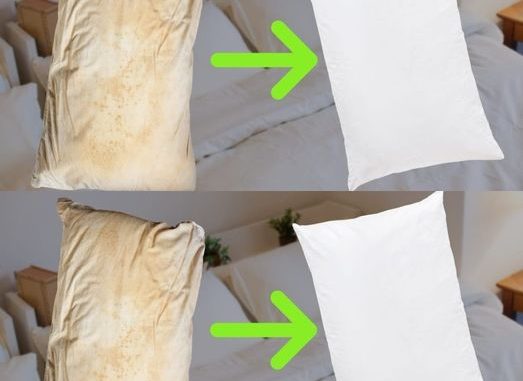
Persistent odors, grease deposits in the kitchen, and yellowing clothes are enough to drive anyone crazy with daily household challenges. Desperate, many of us turn to grandma’s tricks, and for good reason, our grandmothers are full of resources when it comes to keeping a house! If you too are a victim of constantly yellow pillows despite dozens of washes, here’s an effective trick to clean them and make them white as snow!
Even if sometimes we allow ourselves to leave the mess around the house, or let the dishes pile up in the kitchen sink, it’s a completely different story when it comes to our sheets and pillows. Indeed, these are in direct contact with our body during the night, and if poorly cleaned, can become yellow and lead to a proliferation of bacteria and mites harmful to our health.
In addition, we tend to give more importance to cleaning pillowcases than the pillows themselves. In fact, many of us forget that these headrests can become breeding grounds for germs if they are not washed and even changed regularly. Some will say that there is no risk because these are usually covered, but what they forget is that many people use their pillows without a cover when it’s in the wash, and that a covered pillow is far from blocking contact with bacteria.
Risks of Dirty Pillows
The book ‘Diseases and Therapeutics of the Skin’ identifies sweating as one of the main causes of those yellow stains on our pillows that always seem to emerge out of nowhere. Moreover, beyond their yellowish appearance, which let’s face it, doesn’t look very clean, dirty pillows present numerous health risks for those who use them. In an article titled ‘When to Change Your Pillow? The Gross Truth About Its Lifespan’ broadcasted by our colleagues at the Huffington Post, it is recommended to change the pillow every six months to maintain healthy hygiene. In fact, failing to do so would lead to a buildup of bacteria that could eventually lead to respiratory problems. As explained in ‘Clinical Reviews in Allergy and Immunology’, dust mites can lead to the development of sinusitis, rhinitis, atopic dermatitis, and asthma if not controlled. As the Huffington Post article explains:
Leave a Reply